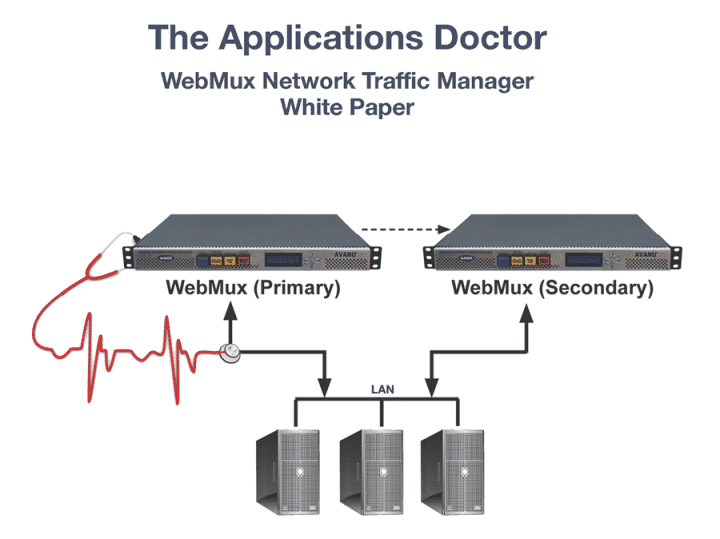Avanu Web-mux Application Delivery Network Load Balancer
 Times are changing. The application world is evolving in terms of how we service applications. It now requires a new approach to load balancing traffic. Applications are becoming more complex. What makes landscaping challenging these days is the connectivity of advanced gadgets like internal cameras, onboard computers, and many other wireless devices. Traditionally, we supported the monolithic single application per server design.
Times are changing. The application world is evolving in terms of how we service applications. It now requires a new approach to load balancing traffic. Applications are becoming more complex. What makes landscaping challenging these days is the connectivity of advanced gadgets like internal cameras, onboard computers, and many other wireless devices. Traditionally, we supported the monolithic single application per server design.
The single application per server was an apparent waste of resource triggering a variety of on-premise and cloud based multi-tiered applications. Each application stack has a number of tiers, potentially requiring load balancing functionality between each tier.
Microservices are also coming to this modern age. Microservices are fast and dynamic, individual services potentially located in different geographic areas posing additional challenges for load balancing and security. There is an increasing demand to support real-time interaction and multimedia content over a variety of network and device types.
Load balancers are ideal to execute the organization’s plan for end-user performance, reliability, availability, and scalability. AVANU offers the best of both worlds, lean load balancing at a low cost enabling business continuity and improving overall system performance. This enables the organizations to meet the most stringent Service Level Agreement (SLA) for the most complex Web application stacks.
AVANU has compiled all the best elements of a load balancer into a complete traffic management solution. Anyone can compile a load balancer but what matters most is the support and convenience of the entire solution.
AVANU experienced professional service team concludes that they are the market leader for lean load balancing at a low cost. Therefore, may it be in terms of performance or user-friendly execution or the cost effect, AVANU load balancer range offers an unmatched solution to your needs.
Application Availability:
The average customer has high expectations and requires peak performance on all device types and networks. In this digital world, slow page loads are unacceptable and the customers expect services to work all the time.
Increasing IoT Traffic Volumes:
Traffic volumes are growing year by year. Gartner® predicts that The Internet of Things (IoT) is going to bring the number of connected devices to over 26 billion. Objects that were not necessarily connected to the Internet will now have IP reachability with the finesse to send and receive data with a variety of payload sizes.
IoT is all about data and is going to create a surge of data transfers through backend applications and
the central IoT control panels will be empowered to handle the flow.
DDoS Protection:
Organizations are entering a new era of DDoS attacks. IoT not only increases the data quantity, but it also increases the DDoS landscape to billions of unsecured IoT devices. The network perimeter is no longer static, making it easier for cybercriminals to launch destructive DDoS attacks.
IoT Mirai BotNets are taking down the most respected networks with Terabyte scaleDDoS attacks.




